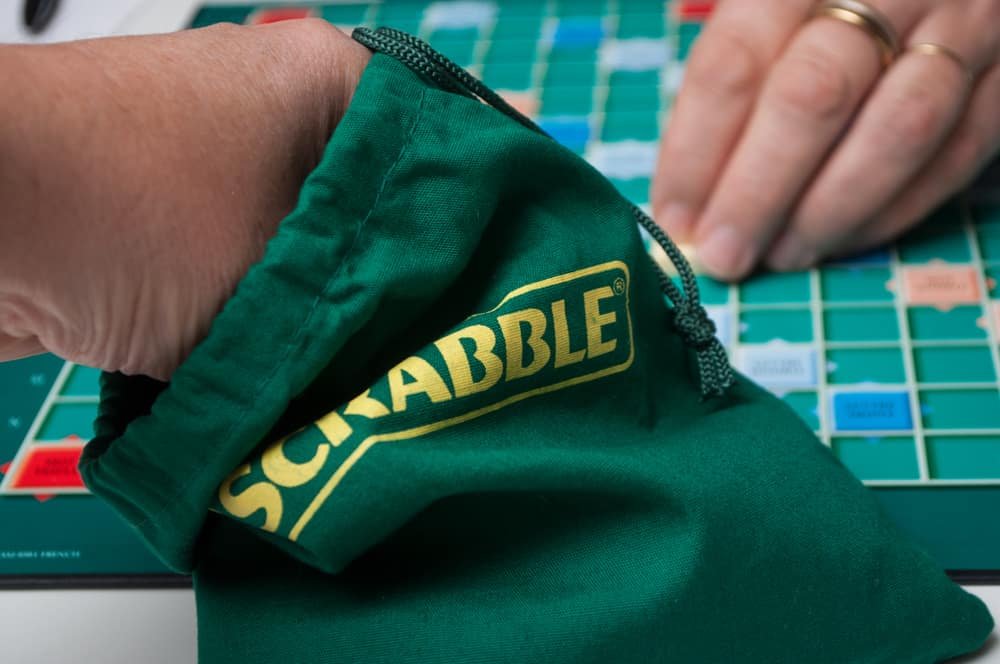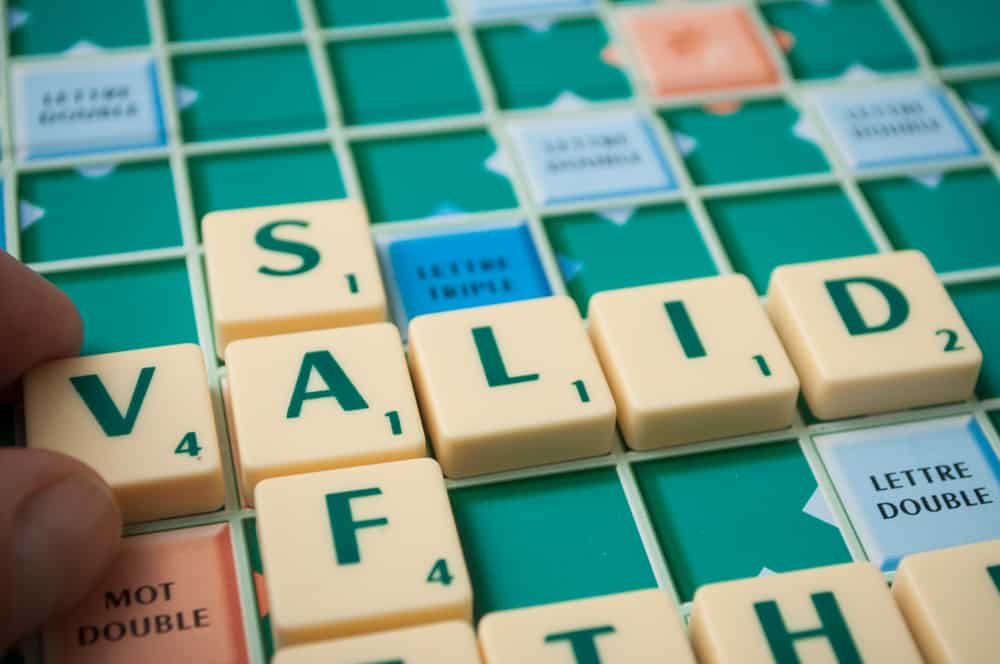Last Updated on January 25, 2024 by Gamesver Team and JC Franco

If you are just starting to learn about Scrabble, or if you are tired of attending family games evenings where you stand around and watch Scrabble in action instead of getting involved, it is time to learn how to play the game yourself. You have come to just the right place to learn everything there is to know about playing Scrabble. As an avid Scrabble player, I am in the ideal position to give you a bit of guidance.
How to play scrabble – follow these 11 steps:
- Set up the board (and racks) and prepare to play.
- Determine who starts the game.
- Each player draws tiles.
- Each player gets a turn to play a word.
- Tally up the scores.
- Draw new tiles.
- Build on the existing words on the board.
- Focus on getting the highest scores possible on each turn.
- Challenge other players on their words.
- Exchange tiles that you do not want.
- Finishing the game: Calculate each player’s score.
Playing Scrabble is probably a whole lot easier than it looks when you are sitting on the outside looking in. When you are involved in the game and used to the gameplay, you will find that it becomes increasingly easy.
If you’re more of a visual learner, I strongly suggest you take a look at the following YouTube clips; one is from “Howcast“, and the other one is from “Triple S Games“.
With that being said (or watch), to take a closer look at each of the 11 steps to playing Scrabble the right way, read on.
Playing Scrabble – Step By Step
If you follow the 11 simple steps above, you can learn how to play Scrabble the right way in a jiffy. Before you know it, you will be playing Scrabble like a pro. Let us take a closer look at each of the steps and what they involve.
1. Set up the board (and racks) and prepare to play.
Preparing for the game means that you get everything you need ready. Make sure that you have a game board, that there are 110 tiles available in the bag, that there is a rack for each player, and of course, that you have willing people to play with. Each person should get a rack and a comfy position at board. Place all of the tiles into the bag and shake it to mix them up nicely. You are now ready to play Scrabble. The next step is to decide who starts the game off.
2. Determine who starts the game.
In order to decide who goes first, each of the players must draw a random tile from the bag. The player who draws the tile letter that is closest to A is the player who will go first. The direction of play is meant to go in a clockwise direction. If any of the players draws a blank tile, it automatically means that they get to start the game. Now that you know who will play first, each player needs to get sufficient tiles to play the game.
3. Each player draws tiles.
Player 1 gets to draw tiles first, followed by the rest of the players, in a clockwise direction. Each player must draw 7 tiles randomly from the bag. It is important that you do not let any other players see what tiles you have. Drawing one tile at a time is helpful as you can place each one onto the rack. When you are done, pass the bag to the next player so that they can do the same.

4. Each player gets a turn to play a word.
Player 1 gets to create the first word. The first word must be at least 2 letters long, and one of the tiles for the word must be placed over the star square that is found in the very middle of the board. This is the starting point.
You cannot play a diagonal word, but you can position the word vertically or horizontally as required. Each player then has a turn to follow suit. It is important to note that the starting word comes with a double score attached. If a player is unable to play a word, he or she can skip a turn. A player cannot skip 2 turns in a row.
Going round after round in a clockwise position makes sense, but when is the game over? The game is over when all letters have been drawn and one of the players has used his/her last letter; or no more words can be played.
5. Tally up the scores.
At the end of the round, the scores need to be tallied up. When you play a word, make a note of the points that the word is worth. You can find little numbers printed on the bottom right corner of each of the tiles. Add these up and keep a note of it. At the end of the game, the person with the highest score will win.
It’s important to note that if a player uses all of his/her 7 tiles in one round, he/she gets 50 bonus points added to their score.
6. Draw new tiles.
Every time you play a set of tiles to make a word, you need to draw new tiles (the same amount as you have just played). The new tiles must be placed onto your rack and the bag of tiles must be passed onto the next player.
7. Build on the existing words on the board.

As each player adds to the board, there are new opportunities to create new words that crop up. With every turn, you get to build on the existing words on the board. You cannot create a word on its own that is not connected to the words that are already on the board. Your added tiles must create a new word. And if your new word connects with other tiles on the board; where they connect has to make sense and be a valid, acceptable word.
8. Focus on getting the highest scores possible on each turn.
As you play, you need to focus on playing tiles that ramp up your score tally as quickly as possible. Really scrutinize the board to ensure that you are seeing all possible options and that you are playing those that earn you the most points. You will notice that there are premium squares available on the board. These are indicated on the board, so if you can play them, do so! These include the following:
- Double word score: words that are placed on this particular area have a double score attached to them. Look at the number printed on the tiles and multiply that by 2 when you are tallying up the score.
- Double letter score: letters that are placed on this particular square will receive a double score. Check the number that is printed on your tile and then make sure that you double that score when you tally up.
- Triple word score: any word that includes the letter tile that is placed on this particular square is liable for a triple score. That means that you multiple the tally for that word by 3.
- Triple letter score: a letter tile that is placed on this particular square can enjoy a score that is tripled.
9. Challenge other players on their words.
While you are playing Scrabble, there might be a word that crops up that you do not think is a real or accepted word. You can then challenge the word. When doing so, you will need to look up the word in the Dictionary to confirm whether it is legitimate or not.
What happens if you are wrong? If you have challenged a word and it turns out that the word does exist and that it is spelled correctly, the player will receive his/her points, and you will lose your turn. If the challenger is correct and there is no such word or it’s misspelled, then the word is removed from the board. There are no points awarded, and the player misses his/her turn.
10. Exchange tiles that you do not want.

There will probably come a time in the game when you feel like there is nothing you can do with your existing tiles. You can then exchange them for new ones, although it is not recommended to do this on a whim. You can do this quite simply by using your turn to discard the old tiles into the bag, shaking it up, and then drawing at random the same amount of cards. If you end up with some of the same tiles, that is just the luck of the draw. If you do this, you do miss your turn to play a word. Exchanging tiles is considered a turn.
11. Finishing the game: Calculate each player’s score.
The game is over when all tiles have been drawn and one of the players has used his/her last letter; or no more words can be played (or made). To calculate each player’s final score, add the points of all of his/her rounds, and then subtract his/her unplayed letters. If a player has no letters left, he/she gets the sum of all the other players’ unplayed tiles added to his/her score. The player with the highest score at the end is the winner. In case there is a tie, the player with the highest score, before deduction, wins.
Last Word
If you would like to learn to play Scrabble, take these steps into account, and then take the next step of putting it all into practice. Ask a friend to practice a round or 2 with you or jump into the deep end by simply participating in the next game you are exposed to. Sometimes actually playing the game makes it far easier to understand and grasp than simply reading through the rules or basic steps. Hopefully, this is the start of a beautiful relationship between you and the Scrabble board. Enjoy!

